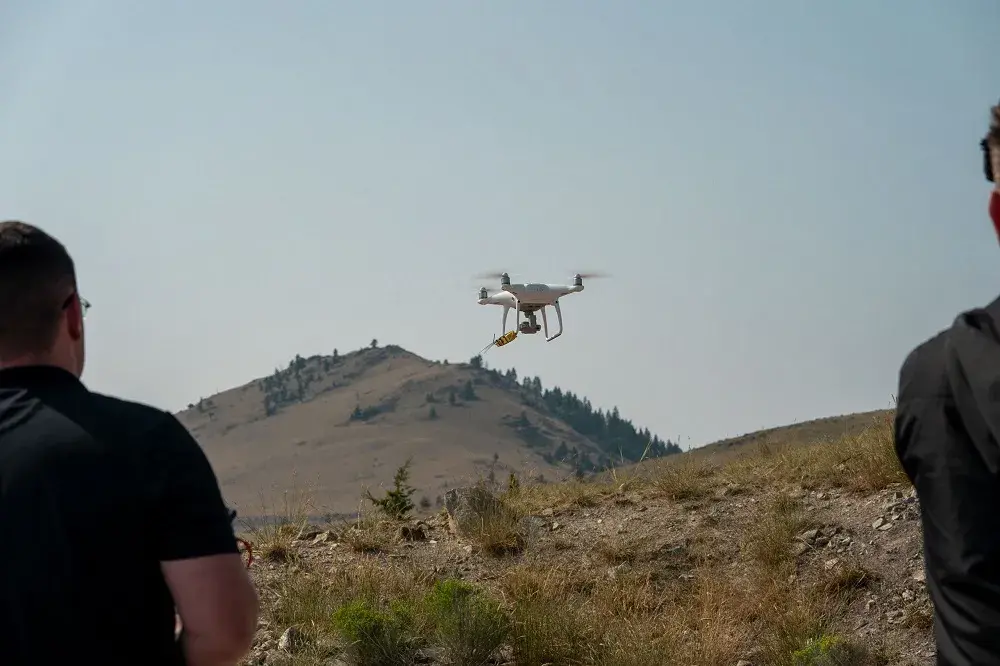FOR IMMEDIATE RELEASE
S&T Public Affairs, 202-254-2385
WASHINGTON - The Department of Homeland Security (DHS) Science and Technology Directorate (S&T) is evaluating cutting-edge air domain awareness technologies to support DHS’s mission to protect the airspace along our northern border with Canada. Working with U.S. Customs and Border Protection, the U.S. Coast Guard, the Department of Defense, and the Federal Aviation Administration to develop requirements and testing criteria, S&T’s National Urban Security Technology Laboratory led a test team that also included the Montana National Guard, Northern Plains UAS Test Site, and MITRE.
 “S&T is excited about this opportunity to conduct these air domain awareness demonstrations and test these unique technologies, sensors, and capabilities in realistic environments” said S&T program manager Shawn McDonald. “Safeguarding the vast geographical landscape and skies surrounding the northern border is no small feat, so these ongoing efforts to increase our security and ensure our safety, both there and throughout the rest of the country, is a whole-of-government effort that we’re proud to be a part of.”
“S&T is excited about this opportunity to conduct these air domain awareness demonstrations and test these unique technologies, sensors, and capabilities in realistic environments” said S&T program manager Shawn McDonald. “Safeguarding the vast geographical landscape and skies surrounding the northern border is no small feat, so these ongoing efforts to increase our security and ensure our safety, both there and throughout the rest of the country, is a whole-of-government effort that we’re proud to be a part of.”
This diverse team of government and industry partners recently completed a three-week test and demonstration of air domain awareness technology systems in Limestone Hills, Montana, to evaluate and assess innovative radar systems, infra-red and electro-optical cameras, radio frequency detection systems, and acoustic devices to determine how effectively each can monitor, safeguard, and secure our northern border and surrounding terrains and airspace.
“Air domain awareness has always been a major challenge for all of us, whether it’s DoD, DHS, or any of the other components of our government responsible for protecting our borders,” said Major General Pete Hronek, Adjutant General for the State of Montana’s National Guard. “The Montana National Guard was honored to host these evaluations at our Limestone Hills training area. It was the perfect setting for industry to showcase their technologies, and for federal partners to see how these technologies perform in environments and scenarios that mimic similar regions surrounding our northern border.”
S&T and its partners’ small manned and unmanned aircraft systems were flown during random times of the day and in different environmental conditions to determine whether the systems being evaluated could quickly and accurately detect, track, and identify them.
The recent assessments in the mountainous terrain of Montana are a follow-up to earlier air domain awareness evaluations that took place in the plains area of Camp Grafton, North Dakota, this past April. S&T is developing comprehensive reports detailing the technologies’ capabilities, and how they each performed in both topographic environments. These reports will then be shared with other federal agencies and organizations looking to procure and implement air domain awareness technologies.
###
